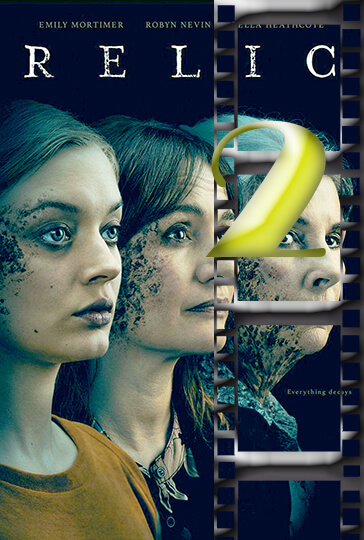

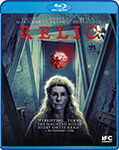
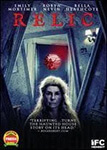
WHAT’S IT ABOUT
An agoraphobic gamer agrees to test new equipment that uses AI to interpret the electrical activity of her brain. Soon, the line between reality and her subconscious starts to blur as she wonders if the device serves a sinister force.
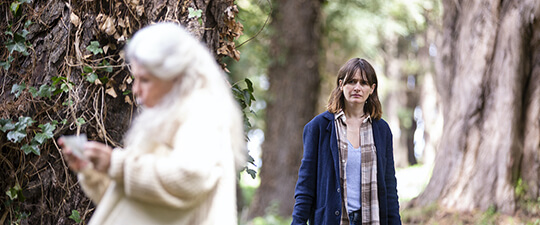
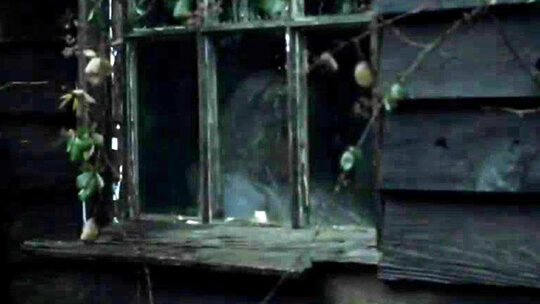

MOVIESinMO REVIEW
In a genre that’s already saturated with haunted houses and family trauma metaphors, Natalie Erika James’ feature debut “Relic” is just another slow-burn horror that promises much but doesn’t quite deliver. This Australian drama based on dementia and aging showed promise but falls firmly into the same old tropes that afflict so many indie horror movies desperate to be “elevated.” “Relic” follows three generations of white women: Kay (Emily Mortimer), who returns to her childhood home after her elderly mother Edna (Robyn Nevin) goes missing; Kay’s daughter Sam (Bella Heathcote); and Edna herself, who mysteriously reappears with strange bruises and increasingly erratic behavior. What follows is an excruciatingly slow 89 minutes that feels twice as long. As a Black critic watching this film, I was completely disconnected from the characters and their issues. While dementia affects every community, this particular portrayal is hermetically sealed within its own cultural sphere. The location of the film—a dilapidated colonial home in rural Australia—offers nothing that can be applied to varied audiences or experiences. It’s just another horror film in which white individuals walk around a big house in a state of angst, shrieking at every creak and making poor decisions. The film’s pacing is probably its biggest problem. James opts for a restrained approach that mistakes boredom for tension. Long, silent shots of hallways and close-ups of mold crawling along walls aren’t atmospheric after the first dozen or so instances—they’re just boring. By the time anything worthwhile happens in the third act, most audiences will have already checked out mentally. Acting-wise, the performers work with what they’re given. Nevin, as Edna does, manage to find moments of genuine uncomfortableness here and there, veering between menace and vulnerability. But Mortimer’s Kay is a cipher throughout, the character’s emotions and motivations never quite registering. Heathcote’s Sam is the go-to angry granddaughter we’ve all seen dozens of times. The movie tries to utilize horror as a metaphor for dementia, a great idea on paper but heavy-handed in practice. The comparisons between Edna’s mental decline and the house’s physical decay are not subtle and lack much insight. The black mold that engulfs the house is not just a visual metaphor; it is actually shouting the themes of the movie into the viewer’s face. What’s particularly disappointing is how “Relic” misses an opportunity to say something about elder care, familial obligation, or how different cultures negotiate aging. Instead, it retreads familiar ground without having anything to add to the conversation. For communities of color, where multigenerational family caregiving has a different historical and cultural significance, there’s nothing here that addresses those experiences or perspectives. Brian Reitzell’s score is as memorable as the rest of the movie, leaning on the same discordant strings and ominous sounds that have become a staple of post-“Hereditary” horror. The cinematography, though able, employs the same blue-gray color scheme that’s become a cliché for modern horror, as though vibrant colors are somehow less frightening. The third act of the movie attempts to pull off a body horror sequence that would work but instead feels derivative of better movies. The conclusion attempts emotional depth but is at best, somewhere in between predictable and confusing. Without spoiling it, the end attempts to reconcile horror and sentiment in a way that sacrifices both. For all its pretensions to depth, “Relic” has almost nothing to say about race, class, or any social aspect that might lend complexity to its examination of family dynamics. It is in a void that these three white women wrestle with their family ghosts without context. Thus, the movie is made irrelevant to conversations on how various communities deal with aging, illness, and death. Even on a pure horror level, “Relic” fails to deliver. There are maybe two or three effective scares in the entire film, with most of the runtime dedicated to characters slowly walking down hallways or staring pensively into the distance. For a genre that should, at minimum, provoke some kind of visceral reaction, “Relic” remains stubbornly tepid throughout. The haunted house itself is a classic horror locale, if ever there was one—all creepy floorboards and secret passages that appear to exist more for trailer footage than as part of the story. We’ve seen this house in horror movies a hundred times, and “Relic” does nothing to distinguish it or even get it to register. James obviously aspires to the ranks of intelligent horror filmmakers such as Ari Aster and Jennifer Kent without their visual style and narrative control. The movie feels like a rough draft of something that might have been interesting with additional work and a more focused point of view. For viewers seeking horror films that tackle different experiences or offer fresh spins on familiar tropes, “Relic” has absolutely nothing to offer. It is just another entry in the endless parade of slow, self-serious horror films about white family trauma developing in isolated locations, cut off from the existence of our multicolored world. In a genre that’s increasingly concerned with addressing social issues and exploring horror from a variety of cultural angles, “Relic” feels regressive in its tunnel vision and conventionality. It’s not actively bad in an offensive way—just totally mediocre and immediately forgettable. With so much other stuff to watch in a competitive streaming landscape, there’s simply no compelling reason to spend time in this haunted house.
OUR RATING – A FORGETTABLE 2
MEDIA
- Genre – Horror
- Street date
- Digital – July 10, 2020
- Blu-Ray/DVD – November 17, 2020
- Video – 1080p
- Screen size 2.35:1
- Sound – English DTS-HD Master Audio 5.1 Surround Sound
- Subtitles – English SDH, French, Spanish
Extras
- Audio Commentary -Director Peter Hyams gives the requisite information about lighting, sets, and filming locations. He pours on the admiration for his two star actors. Overall it’s a generic commentary, which fans of the movie might find interesting, but all others will probably not mind skipping.
- The Filmmaker’s Lens: An Interview with Peter Hyams (HD, 10 min) – A new feature, commissioned for this Blu-ray release brings back Hymas to give us most of the exact some info he spouted in the commentary. Here we’re offered somewhat of a forewarning, when he announces that he never watches his films after they’ve gone through the editing stage. Kind of weird. He’s a dry guy, but does have some valuable information to offer. It’s just that it’s seems to just be a regurgitation of the commentary.
- Trailer – The theatrical trailer is included

